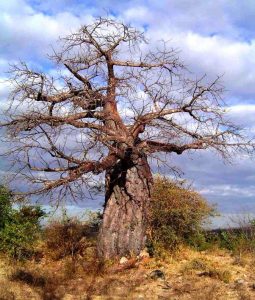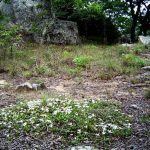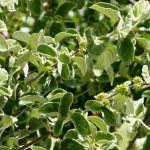TREE LIFE
May 2007
MASHONALAND CALENDAR
Saturday 5th May 2007: Botanic Garden Walk. No walk this week as Tom is away.
Sunday 20th May 2007: A.G.M. The Annual General Meeting will take place at Mr John Moxon’s 64 acre estate in Borrowdale.
Tea and coffee will be served at 9.30 a.m. and the meeting will start at 10. After the meeting we will have our usual botanical walk.
Saturday 26th May 2007: Moir Close, Mandara. A return visit to the Black’s home at Moir Close, Mandara. This is definitely an unusual place with its extraordinary crop of alien and native plants.
TREE LIFE – LATENESS
This is just to apologise to all those who receive hard copies of Tree Life for the delay in sending out the April edition. This was for various reasons, partly involving Easter. We will try and do better this month.
Mark
FURTHER SUBSCRIPTION REMINDER FOR 2007/8
Subscriptions were due on 1 April 2007.
Email Z$ 5,000
Printed copy: collected Z$ 15,000
Printed copy: posted Z$ 25,000
We would very much prefer to receive the subscriptions in cash.
However, if paying by cheque, please make it out to CABS and on the reverse ‘Pay to the account of the Tree Society’
Mark Hyde
MATABELELAND CALENDAR
Please contact Jean Wiley or Gill Short for details of the next Matabeleland function.
CHAIRMAN’S REPORT 2006-7 FOR THE A.G.M. ON 20th MAY 2007

Adansonia digitata: Photo: Bart Wursten. Source: Flora of Zimbabwe
I have pleasure in presenting the Chairman’s report for the year 1 April 2006 to 31 March 2007.
General
Every year in my Chairman’s report, I begin with a comment on the economic situation … and every year I have a worse position to report and yet somehow we manage to keep the Tree Society going.
Take the example of inflation. In my 2006 report it was 782% p.a., this year the official figure is 2200% and I understand that a privately-produced index puts it at 6200%. During the year, the problem of the “inappropriately denominated bank notes” was largely solved, fuel supplies improved a bit (at a price) but these problems were replaced by the rapidly declining purchasing power of the currency.
Outings
A full schedule of 3rd Sunday outings took place, apart from the July outing to Maringambizi, which was cancelled because of the sad death of Barbara Scheidler. The outings were as shown in the following table:
Month Location
April 2006 Mukuvisi Woodland
May A.G.M. – Botanic Gardens
June Mazvikadei Dam
July Cancelled
August Ewanrigg Botanic Garden
August: Heroes weekend 4 day trip to the Nyanga area
September Shenstone, Mt Hampden
October Lowdale Farm
November Jacana Yacht Club, Lake Chivero
December Xmas Social: Val D’Or
January 2007 Mazvikadei Dam
February Ruzawi School, Marondera
March Amarillo, Mt Hampden
Once again, I am very grateful to Meg Coates-Palgrave for her assistance in leading outings. Tom Muller once again led us for walks in the Harare Botanic gardens with his usual humour and patience and a number of most interesting subjects were covered.
John Lawrence and Bernard Beekes contributed write-ups of our outings and Bart Wursten contributed articles in the ‘Vumba specials’ series.
I continued to lead my 4th Saturday walks near Harare; I find I still get a lot of personal interest and satisfaction out of these. I would also like to thank my wife Linda for keeping the Twinarts emails up to date.
Membership
The current membership, compared to previous years, is as follows:
MEMBERSHIP 2007 2006 2005 2004
Ordinary Members 99 127 167 159
Associate Members 5 5 5 5
Honorary Members 6 5 4 6
TOTAL 110 137 176 170
This shows that the decline in members, which levelled off and was even slightly reversed in 2005, has resumed and we are now less than half the size we were 7 years ago.
Clearly, we must do more to attract new members.
Tree Mapping
During the year, the DMAP software was updated and a problem with the parameter file was resolved. The mapping scheme is therefore up and running again and remains in the capable hands of Maureen Silva-Jones.
Tree Life
I took over producing and editing Tree Life in June. This has added considerably to my load as Chairman and ideally I would like to pass this responsibility on to someone else.
The printing and posting of Tree Life remains our greatest expense and we are always encouraging people to change to e-mail, which is easier, quicker and cheaper for the Society.
Finance
The year under review was reasonably satisfactory financially. Significant donations were received during the year and these have been most helpful in keeping us going. Terry Fallon has continued his hard work as Treasurer and we are very grateful to him. I would also like to thank Adele for her assistance with the accounts.
Web site
This has been very reliably maintained by Odette Lind. Our thanks go to her.
Publications
Thanks to the hard work of the publisher (Ian Murphy) and the generosity of the Dutch embassy, Lyn Mullin’s book on vernacular plant names has been published. The printed copies are at present on their way from S Africa. Announcements will be made when they arrive as to how members may obtain a copy.
Committee
Adele Hamilton-Ritchie and Rob Burrett are resigning from the Society with effect from this A.G.M. Both have been helpful and hardworking members of the Committee and were great assets to the Society. Mimi Rowe has recently joined the Committee.
Finally …
I would like to thank the Committee for their commitment and support during the year. Without them the Tree Society would not have functioned so well.
-Mark Hyde Chairman
Extract from An introduction to plant taxonomy, C. Jeffrey Second Edition, 1982, Cambridge University Press
Part 3
Guide to the examination of plant specimens
How does one tell how many carpels make up the pistil?
Proceed as follows:
(1) Examine outline of the ovary.
If it is markedly asymmetrical in cross-section, the pistil is likely to be of only one carpel.
If it is symmetrical, the pistil is likely to be of two or more carpels.
If it is symmetrically lobed into two or more lobes, the number of lobes may indicate the number of carpels.
(2) Examine the styles
If there is more than one style, the pistil is made up of two or more carpels.
The number of styles may indicate the number of carpels.
If there is only one style, the pistil may be made up of one or more than one carpel. Proceed to 3.
(3) Examine the stigmas.
If there is more than one stigma the pistil is made up of two or more carpels. If there is only one stigma, the pistil may be made up of one or more than one carpel.
If the stigma is asymmetrical, especially more or less horse-shoe shaped, then this is a good indication that the pistil is made up of only one carpel.
If the stigma is symmetrical, the pistil is likely to be made up of two or more carpels.
If the stigma is lobed symmetrically into two or more lobes, the pistil is likely to be made up of two or more carpels and the number of lobes may indicate the number of carpels.
If the stigma is quite unlobed, proceed to 4.
(4) Cut a transverse section of the ovary across its middle.
Is the ovary divided up into a number of compartments (LOCULI) by two or more vertical walls (SEPTA) running from the outside and joining in the middle?
If so, the pistil is made up of two or more carpels and the number of loculi may indicate the number of carpels.
If not, the pistil may be made up of one or more than one carpel.
(5) Examine the number of placentae visible in cross section.
If more than one, then the pistil is made up of two or more carpels and the number of placentae may indicate the number of carpels.
If only one, then the pistil is likely to be made up of only one carpel.
Using a combination of methods 1 – 5 above, it is usually possible to decide if the pistil is simple or compound.
If SIMPLE the gynoecium is
APOCARPOUS and composed
Of a single FREE CARPEL.
If COMPOUND, the gynoecium is SYNCARPOUS and
Composed of two or more UNITED CARPELS.
In the latter case, record: NUMBER of STYLES
NUMBER of STIGMAS (or
LOBES of STIGMA if stigma single)
NUMBER of LOCULI in OVARY.
NUMBER of CARPELS making up THE PISTIL
(17) Record the Placentation
To do this make transverse and longitudinal sections of the ovary.
If the parts are small, placentation is often better seen if sections are made of older ovaries, in already faded
Flowers, when the ovules have started to increase in
Size to form seeds.
Is the placentation:
AXILE?
PARIETAL?
FREE-CENTRAL?
APICAL?
BASAL
(18) Record type of fruit (if present) e.g.
is FRUIT TRUE or FALSE?
If FALSE, is it SIMPLE or COMPOUND?
If TRUE and SIMPLE, is it DEHISCENT,
INDEHISCENT or SCHIZOCARPIC?
Is it FLESHY or DRY?
If DEHISCENT, is it a CAPSULE (LOCULICIDAL,
SEPTICIDAL, PYXIDIATE), FOLLICLE or LEGUME?
If INDEHISCENT, is it a BERRY, DRUPE, ACHENE,
CYPSELA, CARYOPSIS, NUT or SAMARA?
If SCHIZOCARPIC, are there MERICARPS, NUTLETS or SAMARAS?
How many SEEDS has the FRUIT?
Record seed SHAPE, SIZE and surface ORNAMENTATION, and other associated structures if any.



